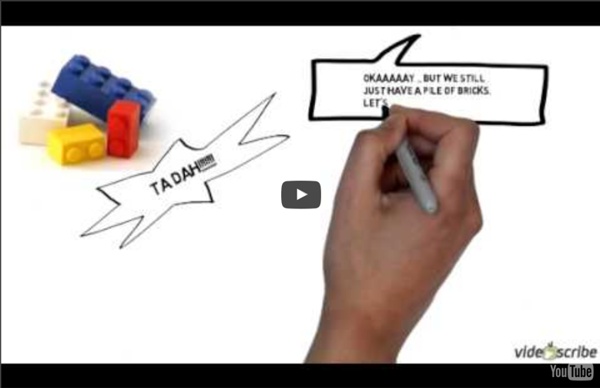



Going SOLO: An introduction to the taxonomy everyone’s talking about This article originally appeared in Innovate My School's September 2012 digital magazine. The Structure of Observed Learning Outcome (SOLO) taxonomy aims to show pupils how to develop sophisticated responses to questions by getting them to examine their thought-process as their understanding of a topic improves. I began using SOLO in 2011, and it is now integral to my teaching. SOLO defines five stages of understanding for any topic: prestructural, unistructural, multistructural, relational and extended abstract. All well and good. SOLO LEVEL: PRESTRUCTURAL (the pupil has missed the point) PUPIL RESPONSE:I think Johnny Depp is a Shakespeare character because we watched a film featuring both of them. TO MOVE ON:The pupil must begin to gather basic information on the topic. PUPIL RESPONSE:Johnny Depp acts in films. TO MOVE ON:The pupil has understood one choice Johnny Depp has made, but there is no further detail. PUPIL RESPONSE:I know lots about the life and times of Johnny Depp.
Profesor 3.0 SOLO Taxonomy versus Bloom's Taxonomy The SOLO Taxonomy (Biggs & Collis, 1982), provides a measure of cognitive learning outcomes or understanding of thinking, that, in my experience, teachers have felt comfortable adopting. This hierarchical model is comprehensive, supported by objective criteria, and used across different subjects and on differing types of assignments (Hattie & Purdie, 1998). Teachers enjoy the way that SOLO represents student learning of quite diverse material in stages of ascending structural complexity, and that these stages display a similar sequence across tasks. Notes from Professor John Hattie Course 224: Assessment in the Classroom (The University of Auckland) "Creating best tests using Bloom's taxonomy or the SOLO classification." Critique of Bloom's taxonomy The taxonomy was published in 1956, has sold over a million copies, has been translated into several languages, and has been cited thousands of times. It is thus remarkable that the taxonomy has been subject to so little research or evaluation.
5 facettes pour construire un dispositif hybride : du concret ! Après une introduction à la notion de dispositif hybride pour enseigner et apprendre, nous donnons quelques conseils concrets (point 5) « pour enseigner et pour favoriser l’apprentissage en ligne » basés sur les 5 facettes de « notre » modèle pragmatique d’apprentissage (Lebrun, 2005). J’illustre ce modèle dans un autre billet « J’enseigne moins, ils apprennent mieux« . 1. Un dispositif hybride, qu’est-ce que c’est ? Le mot « dispositif » est fréquemment utilisé dans la littérature et ce dans différents domaines : appareillage sophistiqué, stratégie militaire, campagne de presse … Nous entendons par dispositif un ensemble cohérent constitué de ressources, de stratégies, de méthodes et d’acteurs interagissant dans un contexte donné pour atteindre un but. 2. Nous sommes ainsi très proche d’une définition de l’enseignement donnée par Brown et Atkins (1988) : L’enseignement peut être regardé comme la mise à disposition de l’étudiant d’occasions où il puisse apprendre. 3. 4. 5. Références
Profesor 3.0: ¿Esta alineado tu sistema de enseñanza y evaluación con los resultados de aprendizaje que pretendes lograr? la respuesta de John Biggs (Serie Mis gurús en Educación: John Biggs) John Biggs es conocido en el mundo entero entre los profesores universitarios que leen libros sobre enseñanza universitaria (una exigua y selecta minoria del profesorado) por sus influyentes ideas sobre educación universitaria y su bestseller Teaching for Quality learning at University que ya va por su cuarta edición. En este libro John nos explica sus ideas sobre el alineamiento educativo, los abordajes de los alumnos ante su aprendizaje y los tipos de profesores Universitarios.Conocí de la obra de John hace más de diez años cuando allá por 2003 buscaba en Internet información para enseñar mejor a mis alumnos y encontré una página web de JS Atherton que ilustraba la taxonomía de John Biggs de la estructura del aprendizaje observado (SOLO, Structure of Observed Learning Outcomes). John Biggs me confirmó en una idea a la que yo ya había llegado por mi propia experiencia. John Biggs tiene una gran perspicacia, una fina ironía y un humor agudísimo. Ralph W Tyler en 1949 escribió:
SOLO Taxonomy by Tait Coles on Prezi La scénarisation pédagogique en 5 étapes clés Accueil > Dossiers et articles > La scénarisation pédagogique en 5 étapes clés Par Élodie Lestonat | e.lestonat@cursus.edu Créé le mardi 11 mars 2014 | Mise à jour le mardi 11 mars 2014 La scénarisation pédagogique est devenue un processus incontournable en particulier dans le domaine de la formation à distance. En effet, l'introduction et le développement du numérique nécessitent de mener une réflexion approfondie avant toute construction de la formation elle même. Thot Cursus vous a proposé récemment 5 articles décrivant les étapes principales de la scénarisation pédagogiques. Bonne lecture et bonne scénarisation ! Illustration : Mathias Rosenthal, Shutterstock.com Sujets : Formation à distance , Évaluation - Reconnaissance des acquis , Enseignement - Didactique - Pédagogie , Tutorat - Soutien aux études , Conception de cours , Technologies en éducation , Formation des maîtres Mots-clés : Formation à distance , E-Learning , scénarisation pédagogique , Thot Cursus
15 enlaces para cambiar la evaluación El final del trimestre es sinónimo de evaluación. Revisión, calificación, éxito, fracaso, notas. ¿Sacamos todo el partido a la evaluación? ¿Cómo podemos conseguir que evaluar sirva para mejorar y no solo para calificar e informar? Proyecto EDIA ofrece materiales con los que el verbo evaluar amplía su significado con términos como reflexionar, analizar, compartir, mejorar, planificar y superar. Esta colección de documentos es el complemento perfecto a la colección de rúbricas del proyecto EDIA. Recursos del proyecto EDIA presentados en forma de procesos de evaluación y aprendizaje, con los que los alumnos se implican en el análisis de su aprendizaje, el docente consigue mucha más información y la evaluación es una herramienta que aparece continuamente en nuestras experiencias de aula para conseguir el éxito en el aprendizaje. Al inicio de las secuencias didácticas Durante las tareas Al culminar el proyecto El docente también evalúa y es evaluado